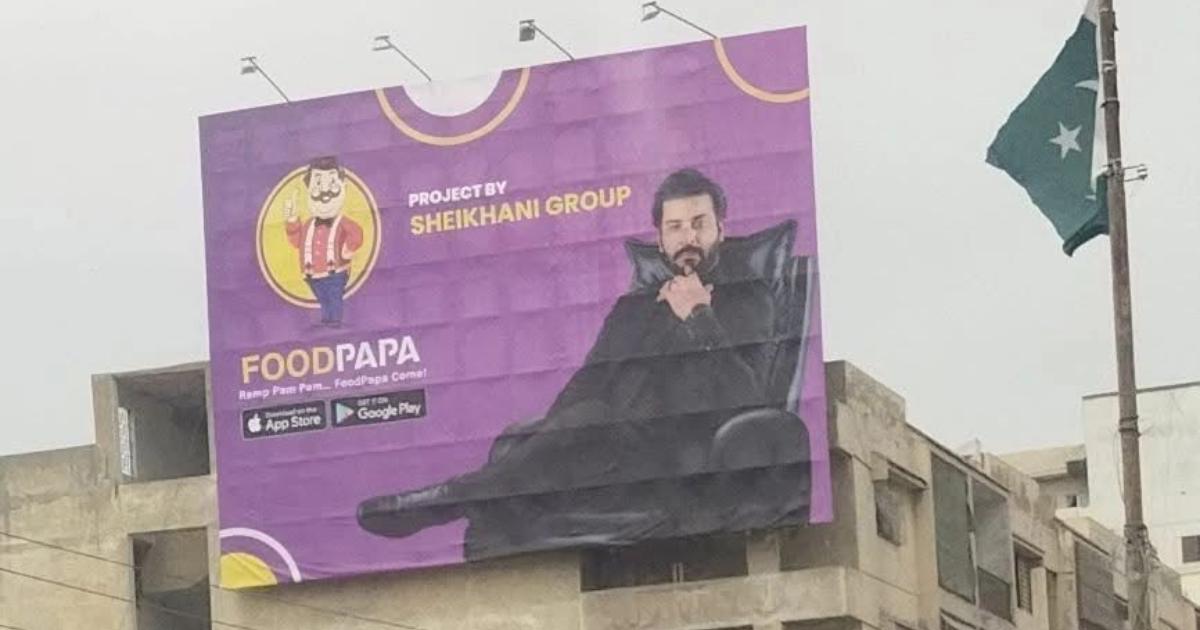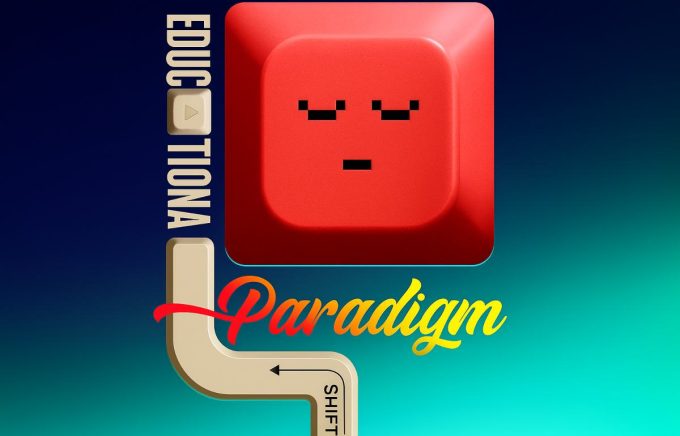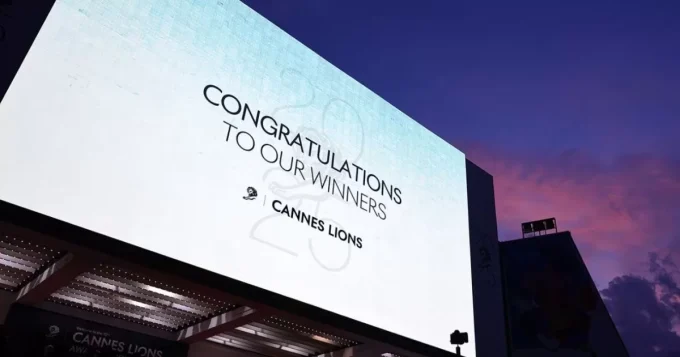The FoodPapa Billboard
The FoodPapa billboard in Karachi has left citizens asking, “Wait, what is this ad even for?” From the outset, its cryptic tagline, zero context, and Game-of-Thrones-on-a-budget visuals make it hard to decipher. As a result, it’s a branding misfire that shows exactly what happens when the marketing team prioritises going viral over delivering clarity.
I think we have all seen the unusual FoodPapa Ad across Karachi by now. This billboard isn’t just a bad ad, it’s an example of what happens when marketing forgets its audience, intent and message all at once.
Aesthetically, it’s laughably creepy; just a man on a throne looking vaguely intimidating and a tagline that sounds like an AI trying to rhyme under pressure. “Ramp Pam Pam, FoodPapa come” feels like a parody of itself. But, peel back the layers, and you realise it’s actually a fascinating and painful example of bad branding.
Let’s talk positioning first. “FoodPapa” is clearly trying to mimic the other Food delivery app we all know. But it’s not just the name, but in tone and the colour palette. FoodPapa just… appeared. Unannounced, unexplained, and honestly just weirdly.
Just a man on a throne looking vaguely intimidating and a tagline that sounds like an AI trying to rhyme under pressure. “Ramp Pam Pam, FoodPapa come” I don’t even know where to begin. Is it a jingle? A summoning spell? A line from a rejected nursery rhyme? (I would use it to scare kids) It sounds like someone panicked mid-brainstorm and just started making sounds until it vaguely resembled a sentence.
And then there’s the mysterious “Sheikhani Group” proudly stamped on top like that name alone should elicit awe. Most of us are staring up at this giant ad thinking, “Who is Sheikhani?”
There’s no context, no credibility, no reason for us to care. This billboard assumes we all collectively know and worship Sheikani like he’s the Pakistani Elon Musk. Spoiler: we don’t. Most people are squinting at this like, “Uncle, aap ho kaun?”
The messaging is where this ad just… gives up on life. There’s no call to action. No hook or emotional pull, or any context. Nothing that says, “Hey, this is why you should care.”
Marketing is supposed to take a brand’s intent and turn it into something people actually understand, something they want to engage with, maybe even love a little. While this does the opposite. It alienates. It confuses. And worst of all, it assumes.
It assumes people already know the brand, the weird mascot or the giant game-of-thrones-esque character. Thinking it can carry the whole thing, when Sheikhani looks like it was yanked from Google. It assumes mystery is intriguing, but really, it’s just irritating. Ambiguity isn’t clever if it leads nowhere.
The most baffling part is that it doesn’t even tell you what the ad is for. Is it a product? A service? A social campaign? You shouldn’t need a decoder ring to understand what you’re looking at.
And let’s not ignore the social context here. This is Pakistan, where brand trust takes years to build, and consumer behaviour is deeply tied to relatability, word-of-mouth, and perceived legitimacy.
A flashy billboard without a known face, without a relatable brand story, and basic clarity will never resonate. Instead, it inevitably becomes a meme, and in this case, rightly so.
This entire campaign feels like it was pieced together by people who were dared to make the laziest ad possible and still get it approved. No clarity on what FoodPapa even is, a delivery service? A restaurant? A fever dream? I’ve seen more coherent messaging in street chalk drawings.
In a world where marketing is about storytelling and connecting with people, this billboard is just noise. Loud, confusing, and comedic.
Real money was spent. Real people approved this. And now the whole of Karachi is forced to witness what might just be the laziest marketing campaign in human history.
Marketing isn’t just slapping random words on purple and calling it a campaign. It’s storytelling. Its intention. It’s a strategy. Right now, FoodPapa isn’t telling a story; it’s telling on itself.
It only delivers confusion, second-hand embarrassment, and a textbook example of what happens when branding turns into an inside joke no one asked to be part of.










